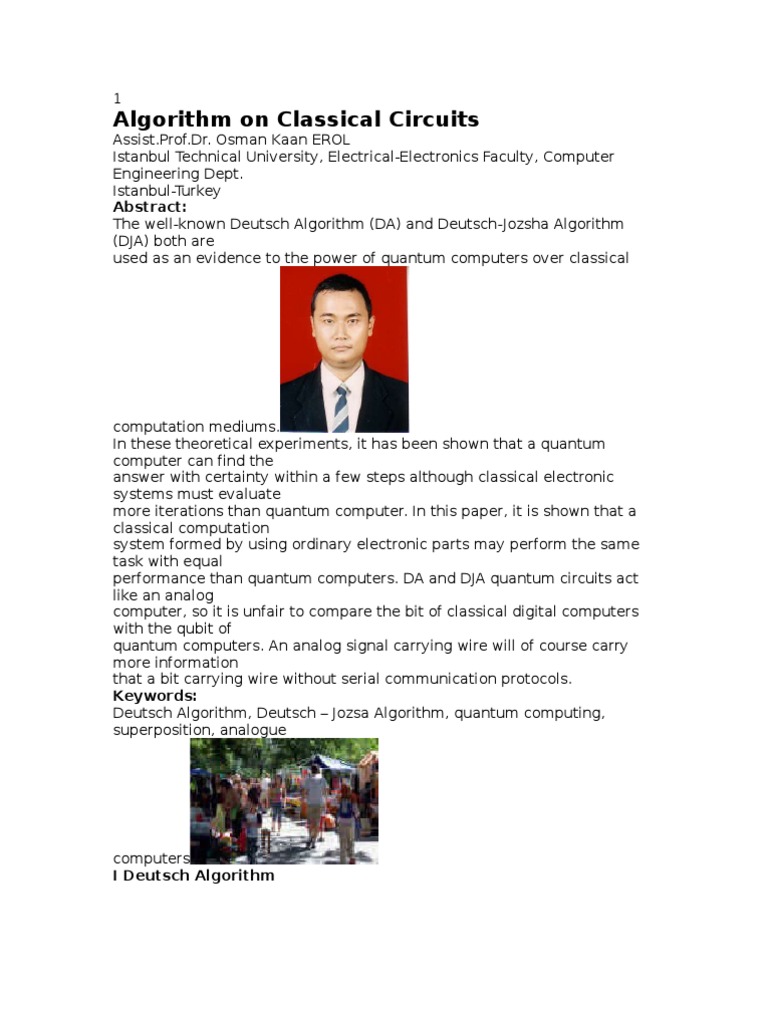Throughout the annals of computer science, classical algorithms have remained foundational to the development of computational systems. These algorithms, which exercise a systematic method for solving problems, extend their reach into myriad applications across diverse fields ranging from mathematics to artificial intelligence. This discussion delves into several notable classical algorithms, elucidating their unique characteristics, operational principles, and the realms of their influence.
At the heart of computer science lies the concept of sorting algorithms—mechanisms designed to reorder elements within a list or array according to a defined sequence. Among the most renowned is the Quick Sort algorithm. Developed by Tony Hoare in 1960, this algorithm employs a divide-and-conquer strategy. By selecting a ‘pivot’ element, it partitions the data into segments that are smaller and larger than the pivot, subsequently applying the same process recursively. It epitomizes an elegant and efficient approach to sorting, with an average case time complexity of O(n log n), making it particularly well-suited for large datasets.
Conversely, the Merge Sort algorithm, another standout in the sorting category, showcases a different methodology. It divides the list into smaller sublists until each sublist contains a single element. These sublists are then systematically merged back together in a manner that yields a sorted list. Merge Sort is revered not only for its consistent O(n log n) time complexity regardless of input but also for its stability, making it invaluable when the preservation of the original order of equal elements is critical.
Beyond sorting, classical algorithms play a dominant role in search operations. Binary Search exemplifies efficiency in this realm. It assumes a sorted dataset and operates by determining the midpoint of the list, subsequently discarding half of the remaining elements based on comparisons to the target value. The logarithmic time complexity of O(log n) significantly outperforms linear search methods, particularly as dataset sizes burgeon. Its presumption of pre-sorted data, however, underscores the inherent challenges in dynamic datasets.
Graph algorithms form another pivotal area of classical computational methods, reflecting the complexity and interconnectivity of data structures. Dijkstra’s Algorithm stands out for its utility in finding the shortest path between nodes in weighted graphs. While traversing the graph, it methodically evaluates potential paths, retaining a record of the shortest discovered distance to each node. The algorithm’s greedy nature ensures optimal pathfinding but is constrained by its reliance on non-negative weights.
Likewise, Prim’s and Kruskal’s algorithms are paramount for solving the Minimum Spanning Tree (MST) problem, a quintessential challenge in network design. Prim’s Algorithm extends a single tree from an arbitrary starting vertex, progressively incorporating the least costly connections. Conversely, Kruskal’s Algorithm builds the MST by merging disjoint sets and consistently selecting the smallest edges until all vertices are connected. Both algorithms exemplify distinct approaches to a shared objective, highlighting the versatility inherent within classical algorithm design.
Another vital class of algorithms lies within the domain of dynamic programming, where overlapping subproblems and optimal substructure properties are leveraged. The Fibonacci sequence calculation serves as a textbook illustration; its recursive nature can be highly inefficient without memoization to cache intermediate results, reducing the time complexity from exponential to linear. This paradigm yields profound implications in various fields, including operations research and combinatorial optimization, where decision-making processes necessitate the evaluation of numerous possible arrangements.
The Traveling Salesman Problem (TSP) encapsulates the essence of combinatorial challenges. Seeking the most efficient route that visits a set of cities exactly once before returning to the starting point, this NP-hard problem tests the limits of classical algorithmic approaches. Solutions may involve heuristic methods such as the nearest neighbor algorithm or more sophisticated strategies, like genetic algorithms, to approximate optimal solutions in a feasible time frame, underscoring the richness of algorithmic exploration.
Further exemplifying the depth of classical algorithms, the Fourier Transform operates as a transformative process in signal processing. It decomposes a function or a signal into its constituent frequencies, rendering it an indispensable tool in various applications, including audio signal processing, image analysis, and quantum physics. The Fast Fourier Transform (FFT), an efficient algorithm for computing the discrete Fourier transform, revolutionized the analysis of signals, enabling computations to be performed in a fraction of the time previously required.
In conclusion, classical algorithms serve as the linchpin of computational innovation, their myriad forms reflecting the complexities of problem-solving in the digital age. This examination of sorting methodologies, graph traversal techniques, dynamic programming paradigms, combinatorial challenges, and transformative processes highlights not only the historical significance of these algorithms but also their ongoing relevance across an array of disciplines. As technology perpetually evolves, the foundational principles embodied in classical algorithms will undoubtedly continue to influence the frontiers of computational advancement.












